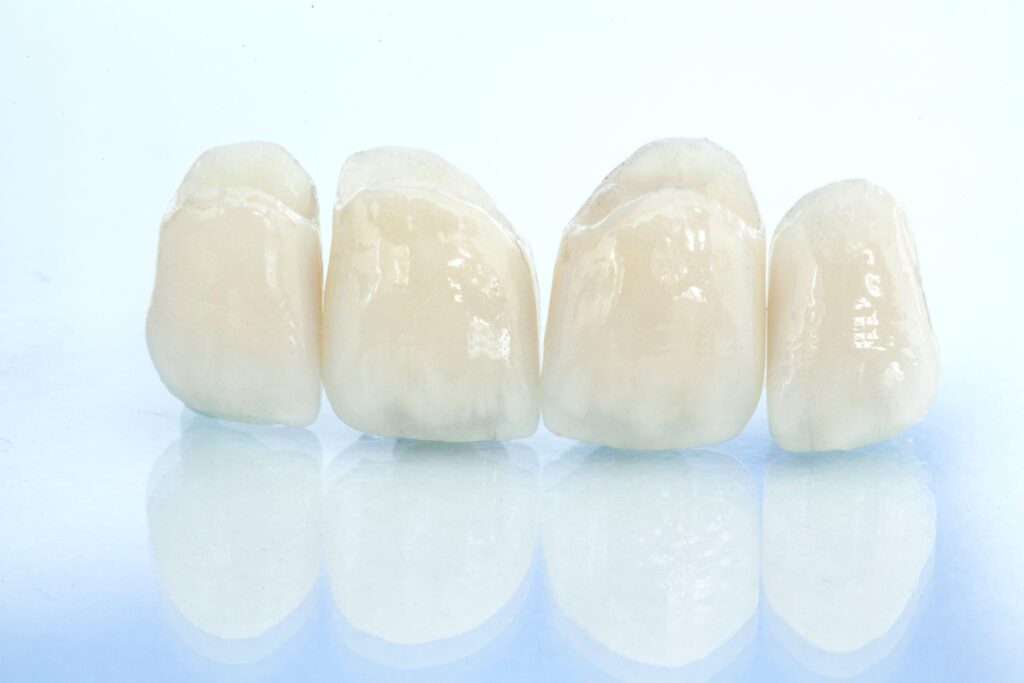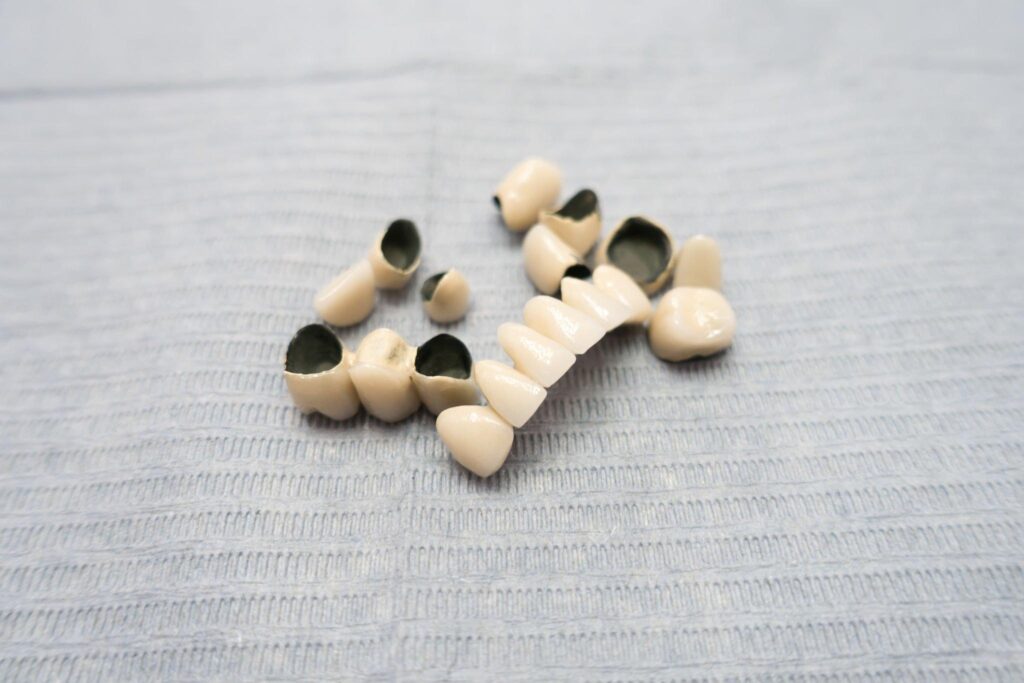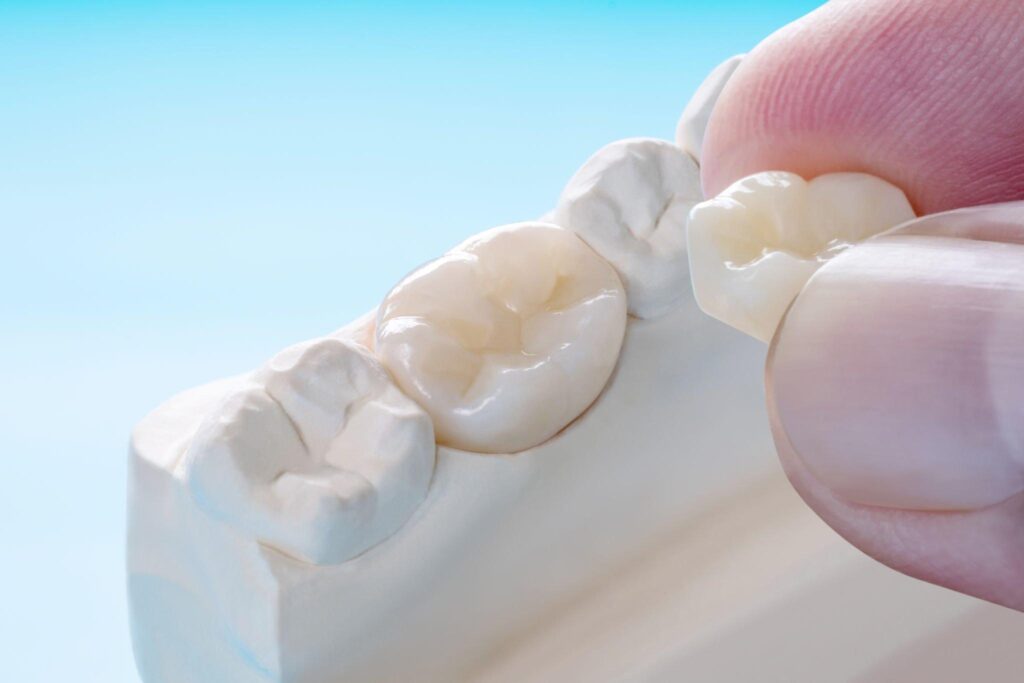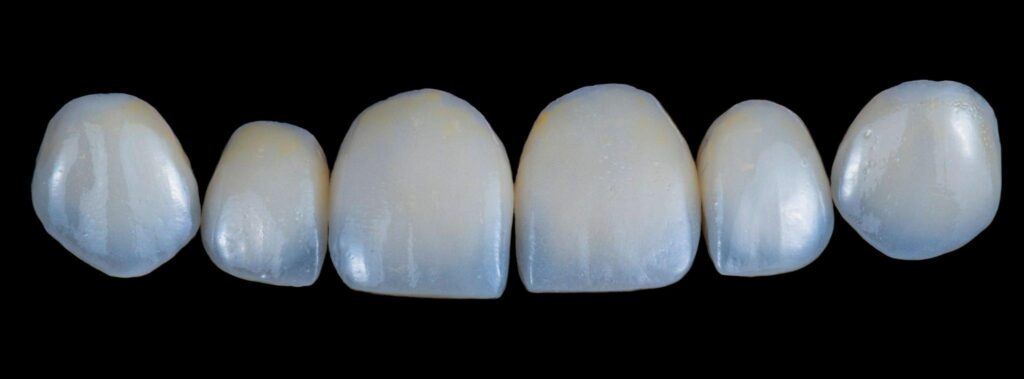The Ultimate Guide to Dental Ceramic Crowns: A Perfect Blend of Beauty and Functionality
Introduction to Dental Ceramic Crowns

When it comes to maintaining a healthy and beautiful smile, dental ceramic crowns have become a popular choice in the world of dentistry. These crowns serve multiple purposes and offer a unique blend of beauty and functionality.
Definition and Purpose of Dental Ceramic Crowns
Dental ceramic crowns, also known as porcelain crowns or porcelain-fused-to-metal crowns, are dental restorations that completely encapsulate a damaged tooth or implant. They provide protection, strength, and aesthetics, mimicking the appearance of natural teeth.
Evolution and Growing Popularity of Ceramic Crowns in Dentistry
Over the years, ceramic crowns have evolved to meet the demands of modern dentistry. The development of advanced materials and techniques has led to their increasing popularity. Advancements in dental ceramics have made it possible to achieve a seamless integration between the restoration and the natural dentition, resulting in a virtually indistinguishable smile.
Types of Dental Ceramic Crowns
Dental ceramic crowns come in various types, each offering its own unique advantages and considerations. Here are the most common types of ceramic crowns:
Full Porcelain Crowns
Full porcelain crowns, also known as all-ceramic crowns, are crafted entirely from porcelain or ceramic materials. They are an ideal choice for patients seeking the most natural-looking restoration. With their translucent properties and ability to mimic the natural enamel, full porcelain crowns deliver exceptional aesthetics.

Porcelain Fused to Metal Crowns
Porcelain fused to metal (PFM) crowns consist of a metal substructure covered with porcelain. This combination provides both strength and aesthetics. While the metal substructure ensures durability and stability, the porcelain overlay provides a natural appearance.

Zirconia-Based Crowns
Zirconia-based crowns are known for their exceptional strength and durability. These crowns are composed of a zirconia framework covered with porcelain. The zirconia substructure provides excellent support, making them suitable for both anterior and posterior restorations.

Lithium Disilicate Crowns
Lithium disilicate crowns are highly esthetic and offer excellent durability. Made from a glass-ceramic material, they are known for their superior strength and longevity. Lithium disilicate crowns are often used for anterior restorations, where appearance plays a significant role.

Advantages of Dental Ceramic Crowns
Dental ceramic crowns offer numerous advantages over other restorative materials. Let’s explore some of the key benefits associated with ceramic crowns:
Natural Appearance and Improved Aesthetics
One of the most appealing aspects of dental ceramic crowns is their ability to closely resemble natural teeth. The translucent properties of porcelain allow light to pass through, mimicking the appearance of natural enamel. This results in a seamless integration with the surrounding teeth, providing a natural and aesthetically pleasing smile.
Biocompatibility and Reduced Chance of Allergic Reactions
Ceramic crowns are highly biocompatible, meaning they rarely cause allergic reactions or adverse tissue responses. Unlike metal-based crowns, ceramic crowns do not contain metals that can trigger allergies or sensitivities in some individuals. This makes them an ideal choice for patients with metal allergies or sensitivities.
Durability and Long-Lasting Performance
Ceramic crowns are renowned for their durability and longevity. With proper care and maintenance, they can last for many years, often exceeding a decade. The robust nature of ceramic materials allows for high resistance to wear, fracture, and chipping, ensuring a long-lasting and reliable restoration.
Minimal Tooth Sensitivity Compared to Other Materials
Unlike some other crown materials that can contribute to tooth sensitivity, dental ceramic crowns are less likely to cause discomfort. The thermal conductivity of ceramic materials is closer to that of natural teeth, reducing the risk of sensitivity to hot or cold substances.
Considerations for Dental Ceramic Crowns
Before undergoing the placement of dental ceramic crowns, several considerations need to be addressed. These considerations help ensure the success and longevity of the crowns. Let’s take a closer look at these important factors:
Tooth Preparation and Removal of Decayed Structure
Proper tooth preparation is crucial for the successful placement of ceramic crowns. This process involves removing any decayed structure and shaping the tooth to accommodate the crown. The dentist must carefully evaluate the integrity and health of the tooth before proceeding with the crown preparation process.
Evaluation of Occlusion and Bite Alignment
Before placing the ceramic crown, the dentist must assess the occlusion (the way the upper and lower teeth come together) and bite alignment. Ensuring proper occlusion is vital for a comfortable and functional bite after the crown placement. Any discrepancies or imbalances in the bite may require adjustments to be made during crown fabrication or placement.
Assessing the Need for Root Canal Treatment Prior to Crown Placement
In some cases, the tooth receiving the ceramic crown may require root canal treatment before the crown can be placed. Root canal treatment is necessary when the tooth’s pulp becomes infected or damaged. This step ensures that the tooth’s structure is healthy and stable before the crown is bonded into place.
Understanding Potential Contraindications and Limitations
While dental ceramic crowns offer many advantages, they may not be suitable for everyone. There are certain contraindications and limitations that need to be considered. For example, individuals with severe bruxism (teeth grinding) may require stronger crown materials, such as zirconia or metal-based crowns.
The Process of Dental Ceramic Crown Placement
The placement of dental ceramic crowns typically involves several steps to ensure a successful and tailored restoration. Let’s walk through the process:
Initial Consultation and Treatment Planning
During the first visit, the dentist will evaluate the patient’s oral health and discuss their goals and expectations. A comprehensive treatment plan will be created, outlining the steps involved in the crown placement process. This plan serves as a roadmap for both the patient and dentist.
Local Anesthesia and Tooth Preparation
Prior to the tooth preparation, the dentist will typically administer local anesthesia to ensure a pain-free experience. The tooth receiving the crown will be numbed, and any previous restorations or decayed structure will be removed. The dentist will carefully shape the tooth to allow for proper crown placement.
Dental Impressions and Temporary Crown Placement
Once the tooth preparation is complete, the dentist will take dental impressions of the prepared tooth and the surrounding teeth. These impressions serve as a mold for the dental laboratory to create a customized permanent crown. In the meantime, a temporary crown will be placed to protect the prepared tooth until the final crown is ready.
Laboratory Fabrication and Customization of the Permanent Crown
Dental laboratories utilize advanced technology and skilled technicians to fabricate the final dental ceramic crown. The impressions are sent to the laboratory, where the crown is carefully crafted to match the shape, color, and size of the natural teeth. This customization process ensures a seamless blend between the crown and the surrounding dentition.
Caring for Dental Ceramic Crowns
Proper care and maintenance are essential for the longevity and aesthetics of dental ceramic crowns. Here are some important considerations for crown maintenance:
Proper Oral Hygiene Practices for Crown Maintenance
Just like natural teeth, dental ceramic crowns require regular oral hygiene practices. Brushing at least twice a day with a soft-bristled toothbrush and fluoride toothpaste helps remove plaque and prevent dental decay. Flossing daily helps clean between the teeth and along the gumline, where plaque and bacteria can accumulate.
Preventive Measures to Protect Against Damage or Fracture
While ceramic crowns are highly durable, they are not entirely indestructible. Avoiding habits such as biting or chewing on hard objects, such as ice or pens, can help prevent damage or fracture of the crown. Additionally, wearing a mouthguard during contact sports or teeth grinding can provide an extra layer of protection.
Regular Dental Check-ups and Professional Cleanings
Regular dental check-ups are crucial to monitor the health and integrity of dental ceramic crowns. During these appointments, the dentist can identify any issues or complications early on and provide appropriate treatment. Professional cleanings help remove any plaque or tartar buildup around the crown margins, ensuring optimal oral health.
Addressing Potential Complications or Issues with Ceramic Crowns
Despite their durability, dental ceramic crowns may occasionally experience complications or issues. It is essential to promptly address any concerns or discomfort with the crown. If the crown becomes loose, fractured, or dislodged, contacting a dental professional is important for timely repair or replacement.
Potential Risks and Complications
While dental ceramic crowns offer numerous benefits, it is essential to be aware of the potential risks and complications associated with them. Here are some possible issues that may arise:
Allergic Reactions or Gum Sensitivity
While ceramic crowns are generally biocompatible, some individuals may exhibit allergic reactions or gum sensitivity to the materials used. It is important to inform the dentist of any known allergies or sensitivities to ensure the most suitable crown material is chosen.
Chipping or Fracturing of Porcelain
Although ceramic crowns are highly durable, they are not completely resistant to chipping or fracturing. Certain habits like teeth grinding or biting on hard objects can increase the risk of porcelain damage. It is crucial to avoid such behaviors to minimize the chances of crown fractures.
Dental Decay or Recurring Cavities Around Crown Margins
Although ceramic crowns cannot decay, the area where the crown meets the natural tooth (crown margin) is susceptible to dental decay. Regular brushing, flossing, and dental visits are essential to ensure the integrity of the crown margin and prevent recurring cavities.
Discoloration or Staining of Ceramic Crowns Over Time
While ceramic crowns are highly resistant to staining, certain habits like smoking, consuming pigmented foods and beverages, or inadequate oral hygiene can cause discoloration over time. Regular brushing and professional cleanings can help maintain the natural aesthetics of the ceramic crown.
Comparisons with Other Dental Crown Materials
Dental ceramic crowns offer a unique set of advantages and considerations when compared to other dental crown materials. Let’s explore some of the key comparisons:
Ceramic Crowns vs. Metal Crowns: Pros and Cons
Ceramic crowns offer superior aesthetics, as they closely mimic the appearance of natural teeth. They are ideal for individuals seeking a restoration that seamlessly blends with their smile. Metal crowns, on the other hand, provide excellent durability and strength but may lack the aesthetic appeal of ceramic crowns.
Ceramic Crowns vs. Composite Resin Crowns: Key Differences
Both ceramic and composite resin crowns have their advantages and considerations. Ceramic crowns offer superior aesthetics and longevity, making them an excellent choice for individuals seeking long-term durability and a natural-looking restoration. Composite resin crowns provide a more affordable option but may be less durable and prone to discoloration over time.
Ceramic Crowns vs. Gold Crowns: Aesthetic Considerations
While gold crowns are renowned for their longevity and strength, they may not be the most aesthetically pleasing option for many individuals. Ceramic crowns, on the other hand, offer a virtually indistinguishable appearance from natural teeth. The choice between gold and ceramic crowns often comes down to personal preferences and functional requirements
Cost Analysis and Insurance Coverage
The cost of dental ceramic crowns can vary depending on several factors. Let’s explore these factors and evaluate insurance coverage and alternative financing options:
Factors Influencing the Cost of Dental Ceramic Crowns
The cost of dental ceramic crowns depends on various factors, including the location, complexity of the case, and the dentist’s expertise. Additional costs may be associated with any necessary preliminary treatments, such as root canal treatment or tooth extraction. It is essential to discuss the cost and payment options with the dental office before proceeding with the treatment.
Evaluating Insurance Coverage for Ceramic Crown Procedures
Insurance coverage for ceramic crown procedures varies among different insurance providers and individual policies. While some insurance plans cover a portion of the treatment cost, others may exclude dental restorations altogether. It is advisable to contact the insurance provider or consult with the dental office to determine the coverage details and any potential out-of-pocket expenses.
Affordable Alternatives or Financing Options Available
For individuals with limited insurance coverage or those who prefer alternative financing options, there may be affordable alternatives available. Many dental offices offer flexible payment plans, dental discount plans, or third-party financing options to help make dental treatments more accessible and affordable. It is worth discussing these options with the dental office to find a suitable solution.
Advancements in Dental Ceramic Crown Technology
With the rapid advancements in dental technology, ceramic crowns have benefited from various innovations. Let’s explore some of the latest advancements in dental ceramic crown technology:
CAD/CAM Technology and Its Impact on Crown Fabrication
Computer-aided design and computer-aided manufacturing (CAD/CAM) technology has revolutionized crown fabrication. This advanced technology allows for precise digital scanning of the prepared tooth, eliminating the need for traditional dental impressions. CAD/CAM systems enable the creation of highly accurate and customized ceramic crowns in a shorter timeframe.
Digital Smile Design for Precise and Personalized Results
Digital smile design (DSD) is a cutting-edge technology that enhances the planning and design of ceramic crowns. It utilizes digital imaging and software to create a virtual preview of the final smile makeover. DSD allows the dentist and the patient to collaborate and visualize the desired outcome, ensuring precise and personalized results.
Improvements in Color Matching and Shade Selection for Natural Aesthetics
Thanks to advancements in ceramic materials and shade selection techniques, dentists can achieve highly natural aesthetics with ceramic crowns. Computerized shade matching systems, spectrophotometry, and layering techniques contribute to color accuracy and seamless integration with the surrounding natural teeth. These advancements ensure that the ceramic crown closely matches the patient’s unique smile.
Future Possibilities in Dental Ceramics and Material Advancements
As dental technology continues to evolve, so does the potential for further advancements in dental ceramics. Ongoing research aims to develop stronger and more esthetic ceramic materials, enhancing the longevity and performance of ceramic crowns. The future holds exciting possibilities, ensuring continued improvement in the field of dental ceramic crown technology.
FAQs (Frequently Asked Questions)
To provide readers with further information, here are some frequently asked questions about dental ceramic crowns:
1.How Long Do Dental Ceramic Crowns Last?
With proper care and maintenance, dental ceramic crowns can last anywhere between 10 to 15 years, or even longer. However, the lifespan of a ceramic crown can vary depending on factors such as oral hygiene practices, occlusal habits, and general oral health.
2.Does the Placement of Ceramic Crowns Require Multiple Visits?
Yes, the placement of dental ceramic crowns typically requires two visits. During the first visit, the tooth is prepared, impressions are taken, and a temporary crown is placed. The second visit involves removing the temporary crown and bonding the customized permanent ceramic crown into place.
3.Are Dental Ceramic Crowns Suitable for Everyone?
While dental ceramic crowns are a suitable option for many individuals, certain factors may limit their use. Patients with severe bruxism (teeth grinding) may require stronger crown materials. Additionally, individuals with limited tooth structure or compromised oral health may require alternative treatment options. It is essential to consult with a dental professional to determine the most suitable treatment plan.
4.Can Dental Ceramic Crowns Be Replaced if Needed?
Yes, dental ceramic crowns can be replaced if needed. Over time, a crown may require replacement due to wear, damage, or changes in the surrounding teeth. If a crown becomes loose, fractured, or dislodged, it is important to consult with a dental professional for an evaluation and prompt replacement.
5.Will the Ceramic Crowns Feel Different from Natural Teeth?
Ceramic crowns are designed to closely mimic the look and feel of natural teeth. In most cases, they blend seamlessly with your existing teeth, making them difficult to distinguish by touch. However, some individuals may initially notice a slight difference in texture or temperature sensitivity, but this typically fades as they become accustomed to the crown. Your dentist will ensure that your ceramic crown is comfortable and fits naturally within your bite.
Conclusion
As we draw this comprehensive guide to a close, it’s essential to recap the significant aspects of dental ceramic crowns and emphasize their importance in enhancing both the function and beauty of your smile.
A. Recap of the Benefits and Applications of Dental Ceramic Crowns
Dental ceramic crowns stand as a remarkable solution in the world of dentistry. They offer a multitude of benefits, including:
Natural Appearance: Ceramic crowns closely mimic the look and feel of natural teeth, ensuring a seamless blend with your smile.
Biocompatibility: With reduced risk of allergic reactions, ceramic crowns are a safe choice for many individuals.
Durability: Their long-lasting performance ensures that your smile remains radiant for years to come.
Minimal Tooth Sensitivity: Unlike some other materials, ceramic crowns typically result in minimal sensitivity, ensuring your comfort.
Whether you’re seeking to restore a damaged tooth, improve aesthetics, or enhance your overall oral health, dental ceramic crowns offer a versatile and effective solution.
B. Encouragement for Individuals Considering Ceramic Crowns as a Viable Solution
For those who have contemplated the potential of ceramic crowns to address dental issues, we offer encouragement to take the next step toward achieving a healthier, more confident smile. Countless individuals have experienced the transformative power of ceramic crowns, and they may very well be the ideal solution for you.
Remember that your smile is a unique asset, and with the guidance and expertise of dental professionals, it can radiate with newfound beauty and vitality.
C. Importance of Consulting a Dental Professional for Personalized Advice
While this guide has provided valuable insights into dental ceramic crowns, it’s crucial to recognize that your dental health is individualized. To determine whether ceramic crowns align with your specific dental needs and aspirations, we strongly recommend seeking the counsel of a dental professional.
Dentists possess the expertise to assess your unique situation, provide tailored recommendations, and guide you through the entire process, ensuring the best possible outcome for your oral health and smile. By consulting a dental professional, you’ll embark on a journey toward a brighter, healthier, and more confident you.
Thank you for exploring the world of dental ceramic crowns with us. Your smile is a precious asset, and with the right care and guidance, it can continue to shine brightly for years to come.

